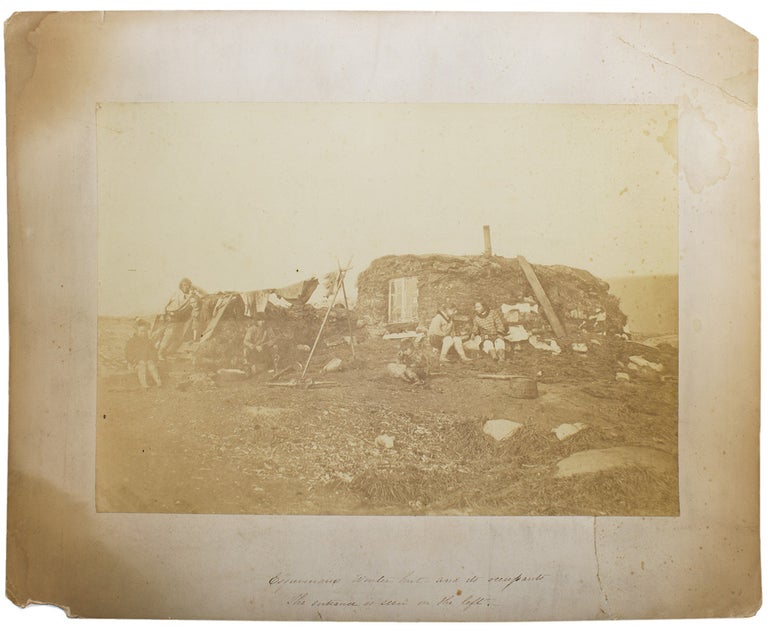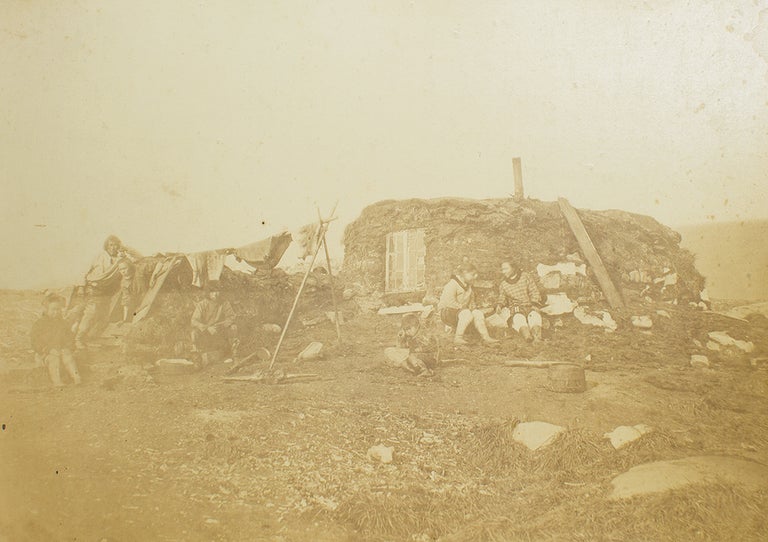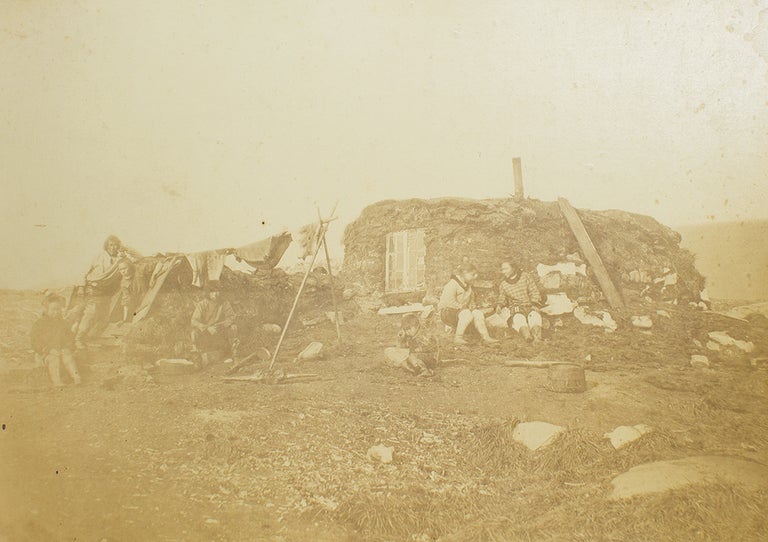Esquimaux Winter Hut and Its Occupants. The Entrance is seen on the Left.
[London]: c.1872.
Price: $4,500.00
About the item
Albumen print measuring 11-5/8 x 16-1/4 in (295 x 412 mm). Laid down on thick cream card with manuscript caption measuring 17 x 21 in. Image slightly faded, card chipped with some minor soiling, one tear not affecting image. Horch, Frank. “Photographs and Paintings by William Bradford”. American Art Journal 5.2 (1973): pp 61–70; cf Parr and Badger I, p31Prm/photo.
Item #303445
A rare survival. This image appears in William Bradford's fabled book of photographs Arctic Regions. It was taken by either Dunmore or Critcherson, the two professional photographers from Boston who accompanied Bradford on his 1869 expedition to the Arctic on the steamship Panther. It was probably taken at Upernavik, a settlement on an island off Greenland's west coast, or Godhavn.
Arctic Regions included 141 albumen prints in addition to Bradford's account of the voyage. The title of the photograph here varies from the printed caption in the book, where it reads: "Plate Number: 116 Esquimaux igloe or winter hut, made of turf and stones. The entrance is to the left through a door which is about three and a half feet high. The length of the passage is about twelve or fifteen feet, and at the farther end is another door, through which one almost has to crawl on his hands and knees. After passing through there is then room to stand erect but one is forced to leave very soon owing to the bad air."
This photograph is slightly larger than the one in the book, which is 277 x 365mm. Furthermore, the image in the book is cropped closer on the right and left margins.
The New York Public Library has a folio of 26 images of near identicle size mounted on card. The portfolio was donated to the library in 1892 as part of the Robert Stuart Collection. According to Horch, originally all of these images were captioned in manuscript, though were later remounted with typed captions as "the original ink-written captions for the photographs had badly faded by 1940." It's interesting that the caption on their duplicate of this image is the same as ours and the image itself has not been cropped. Horch writes that Bradford probably not only selected these images himself but "closely directed the actual taking of the photographs..."
It's entirely likely that Bradford would have had extra prints made to distribute to friends, repay favors and, most of all, to solicit subscribers to what was a very expensive book to publish. Given how it conforms to the examples in the Robert Stuart portfolio, this particular image is probably one of them.




